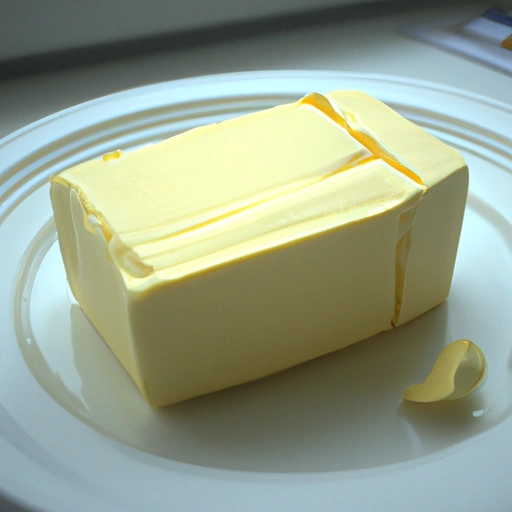Butter
Description

Butter is a dairy product made by churning cream or milk to separate the solid fats from the liquid, known as buttermilk. It is a staple in kitchens around the world and is known for its rich flavor, creamy texture, and versatility in cooking and baking. Butter can come in various forms, including salted, unsalted, cultured, clarified (ghee), and compound butters that have herbs, spices, or other flavorings mixed in.
Common uses
Butter is commonly used as a spread, a key ingredient in baking, a fat for cooking, and a base for sauces. Its application ranges from simple uses like buttering bread to more complex techniques like creating flaky pastries or rich emulsified sauces like Hollandaise.
Nutritional value
Calories
In a typical serving size of 1 tablespoon (14 grams or 0.5 ounces), butter contains approximately 100 calories.
Protein
Butter contains a minimal amount of protein, with around 0.1 grams per tablespoon.
Fat
Butter is high in fat, with about 11 to 12 grams per tablespoon, primarily consisting of saturated fats.
Carbohydrates
Butter contains a negligible amount of carbohydrates.
Vitamins
Butter is a good source of fat-soluble vitamins such as vitamin A, E, and K2.
Minerals
Butter provides trace amounts of minerals like calcium and phosphorus.
Health benefits
Butter can be beneficial for health when consumed in moderation. It contains butyrate, a short-chain fatty acid that may support gut health and reduce inflammation. The fat-soluble vitamins present in butter are essential for various bodily functions, including vision (vitamin A), blood coagulation (vitamin K), and antioxidant activity (vitamin E).
Potential risks
Butter is high in saturated fats, which, when consumed in excess, can raise cholesterol levels and increase the risk of heart disease. Those with dairy allergies or lactose intolerance may also need to avoid butter. Moderation is key, and many health organizations recommend using butter sparingly in a balanced diet.
Common recipes
Butter is a feature ingredient in recipes such as cakes, cookies, sauces like beurre blanc, and pastries like croissants. It is also used for sautéing, grilling, and as a finishing touch for enhancing flavor.
Cooking methods
Butter can be melted, browned, clarified, creamed with sugar, or used cold in pastry doughs. Its smoke point is relatively low, so it's often mixed with oils when used for high-heat cooking.
Pairing with other ingredients
Butter pairs well with a variety of flavors, including garlic, herbs, cheese, mushrooms, seafood, and sweet ingredients like fruit and chocolate.
Summary
Butter is a versatile and flavorful dairy product cherished in culinary traditions worldwide. With its rich history, nutritional benefits, and myriad uses in the kitchen, butter enhances the taste and texture of countless dishes. Whether used in savory cooking or sweet baking, butter adds a dimension of taste that is unparalleled. However, due to its high saturated fat content, it should be enjoyed in moderation within a balanced diet.